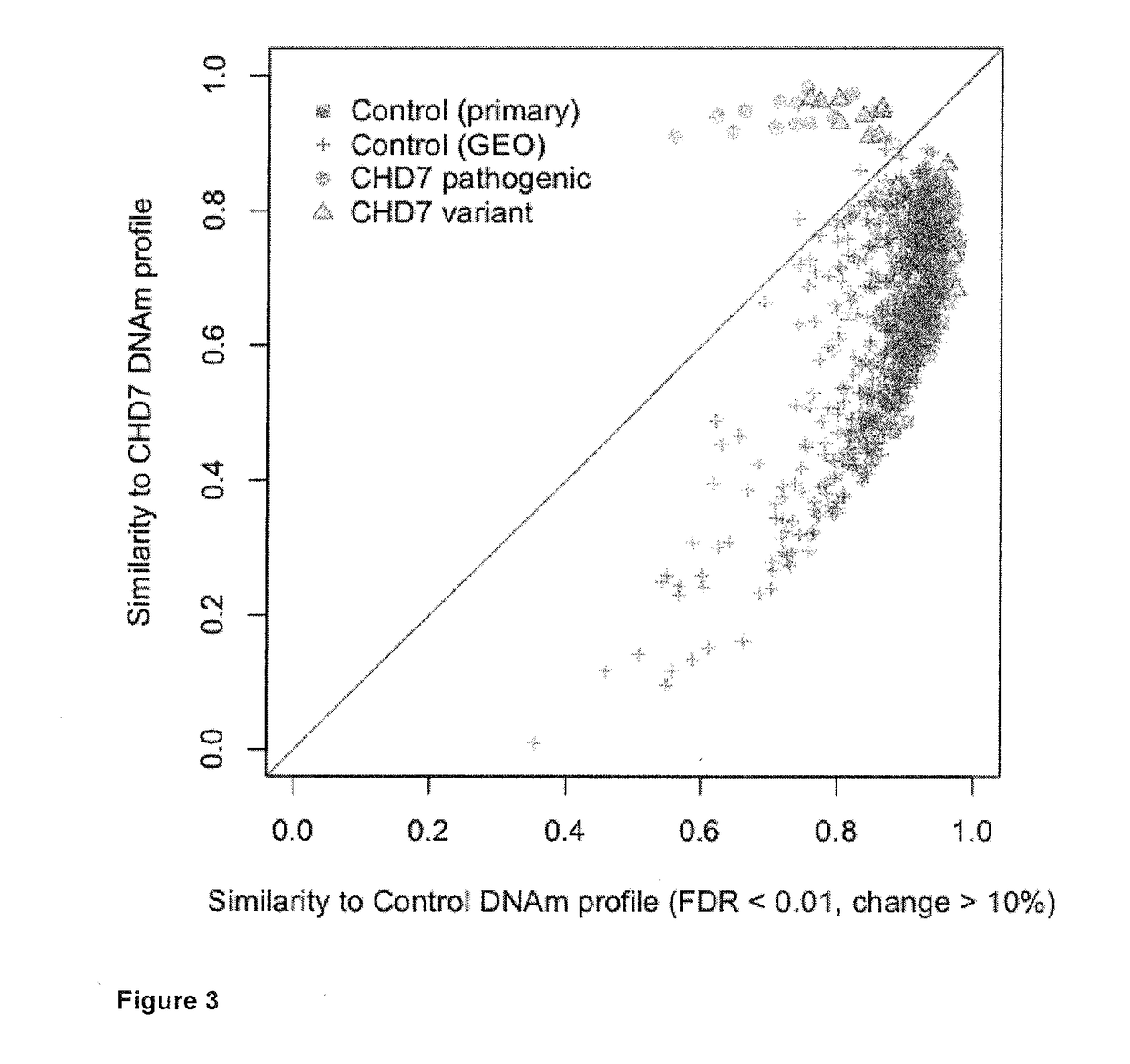DNA methylation markers for neurodevelopmental syndromes
- Summary
- Abstract
- Description
- Claims
- Application Information
AI Technical Summary
Benefits of technology
Problems solved by technology
Method used
Image
Examples
example 1
[0229]DNA methylation was determined in the blood of subjects with CHARGE and a nonsense mutation in CHD7 compared to controls. A set of CpG sites that can be used as a signature to distinguish subjects from controls was identified. This set of CpG sites can be used to distinguish patients from controls and determine if a variant in CHD7 is mostly likely pathogenic or benign. This signature was also specific to those subjects compared to a large sample of population controls. Many of the CpG sites with greater than 10% differences in DNA methylation are known to play a role in early embryonic growth and development. The DNA methylation alterations that occur as a result of heterozygous CHD7 mutations also reveal genes, such as those in the HOXA cluster and FOXP2, which may play a critical role in the aberrant development associated with the clinical spectrum of CHARGE syndrome.
Subjects and Methods
Subjects and Clinical Information
[0230]Individuals with a clinical diagnosis of CHARGE ...
example 2
Summary
[0241]To date, approximately two-thirds of Kabuki syndrome patients have an identified mutation in the Lysine (K) Methyltransferase 2D (KMT2D) gene. Mutations in KMT2D may cause downstream alterations in DNA methylation (DNAm), a modification of DNA that can alter gene expression without modifying the DNA sequence itself.
[0242]DNA methylation was determined in the blood of subjects with Kabuki syndrome and a nonsense mutation in KMT2D compared to controls and is set of CpG sites that could be used as a signature to distinguish subjects from controls were identified. This set of CpG sites is used to distinguish patients from controls and determine if a variant in KMT2D is pathogenic or benign. This signature is also specific to those subjects compared to a large sample of population controls. Many of the CpG sites with greater than 15% differences in DNA methylation are known to play a role in early embryonic growth and development. The DNA methylation alterations that occur a...
PUM
| Property | Measurement | Unit |
|---|---|---|
| Cell angle | aaaaa | aaaaa |
| Correlation function | aaaaa | aaaaa |
| Level | aaaaa | aaaaa |
Abstract
Description
Claims
Application Information
 Login to View More
Login to View More - R&D
- Intellectual Property
- Life Sciences
- Materials
- Tech Scout
- Unparalleled Data Quality
- Higher Quality Content
- 60% Fewer Hallucinations
Browse by: Latest US Patents, China's latest patents, Technical Efficacy Thesaurus, Application Domain, Technology Topic, Popular Technical Reports.
© 2025 PatSnap. All rights reserved.Legal|Privacy policy|Modern Slavery Act Transparency Statement|Sitemap|About US| Contact US: help@patsnap.com



